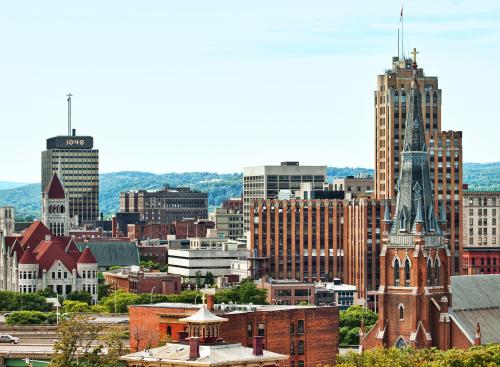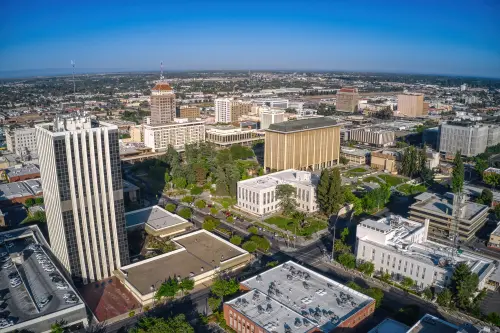On Labor Day afternoon in Milwaukee, President Obama proposed a plan for fixing America’s transportation infrastructure. He presented some good and important reforms for how projects are chosen and on financing techniques that bring in private capital. But given the poor state of our transportation network today, our overall investment needs, and the urgency of repairing our broken policy apparatus, many are wondering if the president’s plan goes far enough.
Our nation’s transportation system is always a hot topic at the end of the summer. Some Americans are hitting the roads and airports returning from summer breaks. Some are getting ready to head back to school on the nation’s nearly half million school buses. Others are preparing to hop on our metropolitan transit systems on their way to work tomorrow.
But the discussion about transportation this year is anything but routine.
One, of course, is the immediate issue of jobs. U.S. unemployment stubbornly ticked up to 9.6 percent in August. The figure for those in the construction sector remains much higher: 17.0 percent and although that’s better than the astounding 27.1 percent figure from February many expect it to rise again when the ARRA money runs out. On other words, too many Americans are not going back to work tomorrow.
Another is the longer term priority of our competitive position globally. Established nations like Germany and rising nations like China, India and Brazil are growing their economies by making purposefully transformative investments in modern ports, freight rail, and other infrastructure. Many are questioning whether U.S. infrastructure is up to the task.
Less popular—but critically important—is the practical policy environment. The latest extension of our nation’s transportation law runs out at the end of the year. In this toxic political environment a failure to renew it could force a shutdown of the program as it did last February putting existing jobs in jeopardy. Washington has to act.
So its no wonder that President Obama chose today to announce his $50 billion plan for “Renewing and Expanding America’s Roads, Railways, and Runways.” A carefully crafted infrastructure agenda can stabilize and strengthen our economy beyond the current crisis and smart investments can generate productive, sustainable and inclusive growth. We called for a strategy of “invest and reform” to ensure that infrastructure investments were driven by market logic, factual evidence, and performance rather than the greatest short-term political reward.
So how does the president’s plan stack up?
First the good: there are several key reforms that promise to change the way transportation infrastructure projects are funded and chosen on the federal, state, and metropolitan levels. A merit-driven national infrastructure bank could be the vehicle for green-lighting projects that have the highest return on investment rather than the greatest political reward. Another round of projects that support bottom-up decision-making that links transportation, housing, energy, and environmental concerns. A program for transportation modeled after the Education Department’s Race to the Top initiative that could instill meaningful reforms on the state level, where most decisions are made.
The investments in high-speed rail and Next-Gen air traffic control are important in that they begin to shift focus away from small bore spending to the kind of transformational investments the federal government should be focusing on. And by linking high speed rail to the rest of the transportation program we can truly begin to think of these siloed investments as a holistic system.
The challenge is how to get this done. Transportation policy in the U.S. is not stalled due to a lack of good ideas. It is stalled due to a lack of funding, or, more accurately, for a lack of interest in raising taxes to generate the funding. Most of what the president proposed is traditionally funded by the tax on gasoline. But as driving declines, and as more fuel-efficient cars mean we’re consuming less gas (it’s true!), there’s much less money overall.
The president has taken any gas tax increase off the table and instead, has proposed to repeal the domestic manufacturing deduction for oil and gas production. This may be enough to fund parts of the president’s plan, and that’s good, but it is short of the comprehensive package we need.
We need to hear more specifics about what the administration’s priorities are for the long term reauthorization of the transportation law. There is no shortage of proposals, including a draft bill out of the House, three national commissions, and a host of others. The “bullet points” presented in Milwaukee represent a small first step.
We need to know how the program—which is pretty much the same framework used to build the interstates a generation ago—will be updated to reflect the realities of 21st century metropolitan America.
And we need a frank conversation about how were going to pay for all this. A jump start now is no good if we stall again down the road.
The Brookings Institution is committed to quality, independence, and impact.
We are supported by a diverse array of funders. In line with our values and policies, each Brookings publication represents the sole views of its author(s).



Commentary
Does the President’s Plan for Fixing America’s Transportation Infrastructure Go Far Enough?
September 6, 2010